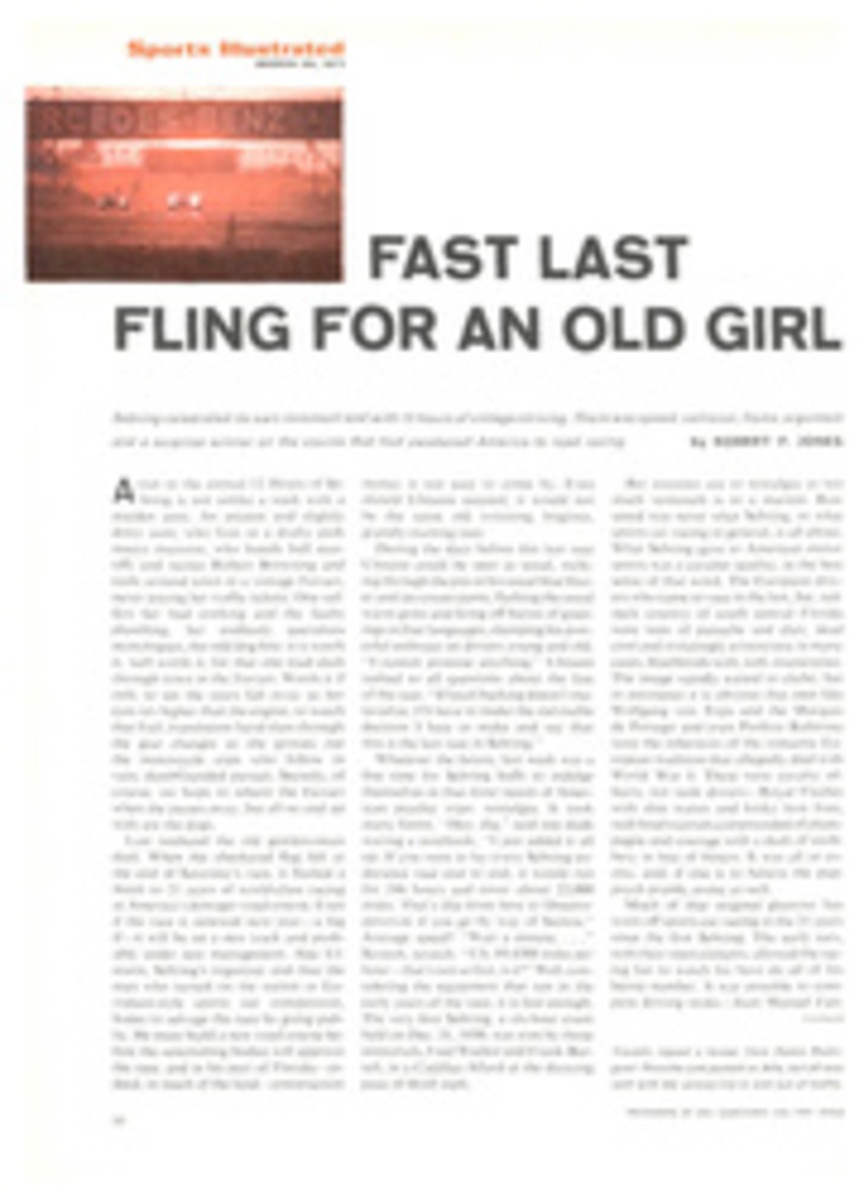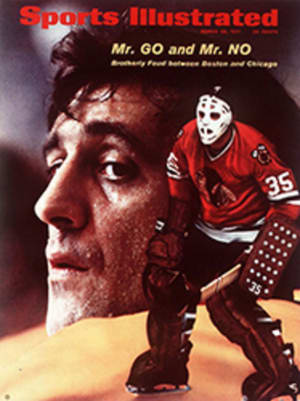
Old pro footballers talk about the past and make a treat of the game that was
It would be useless to pretend that writers are not a competitive lot—envying not only a colleague's completed effort if it is worthy, but also (since research can be sheer drudgery) the time and circumstances, if they are pleasurable, involved in the development of the work. In both instances Myron Cope is to be envied. He has compiled a first-rate book, The Game That Was (World Publishing Co., $10), and he must have had an absolutely marvelous time putting it together. The book consists of a series of monologues developed from interviews Cope conducted with 20 oldtime football players, ranging from Johnny Blood to Bobby Layne, some of which first appeared in this magazine. The device is not new. In 1966 Lawrence S. Ritter published 22 monologues with old baseball players (The Glory of Their Times), and readers, judging by the success of the book, enjoyed reading it as much as Ritter did preparing it.
Myron Cope surely had an equivalently grand time calling on his old warriors and listening to them. He has elicited reminiscences from them that not only evoke a sense of the times in which the ballplayers played (which makes the book interesting as a sociological treatise), but also (if they are to be believed) the chapters provide superb portraits of the game and the people who played it. The parenthetical disclaimer is stated simply because the tales occasionally reach the heights one associates with sitting around the ol hogshead. But no matter—one can "look it up," as James Thurber's oldtimer reminded his readers, and if the truth has been stretched, or missed altogether, it is to be excused in the name of good storytelling.
Reading The Game That Was one searches for traits common to both the characters of those described and today's players. Certainly the topics then were the same one hears around the training camps today. Almost all the oldtimers talk about money—the slim wages they toiled for (a couple of thousand dollars was considered an adequate annual payment)—but their complaint is rueful rather than bitter. The coaches, of course, come in for considerable comment—just as they do today—and they almost invariably turn out, in the eyes of the players, to be dim-witted, overbearing and self-seeking, though all of them were possessed with a competitiveness that is near demonic. Here is Hunk Anderson, as recalled by Alex Wojciechowicz: "Anderson had come over from the Bears to join the Lions as defensive coach, and he said to us, "Gentlemen, we are playing the Bears at Chicago, and there is only one way you can beat the Bears and that is to outslug them.... I want seven men to line up head to head against that Bear line...and when that ball is snapped, I want every man to slug the man in front of him. The worst we can get is a 15-yard penalty. Whether one slugs or seven slug, the most we can get is 15 yards.'
"So on that first play from scrimmage, what you heard all the way down the line was bang, bang, bang. And remember, nobody wore face guards then. Joe Stydahar, the Bears' great tackle, walked off the field. He was bleeding at the mouth furiously.
"The officials, of course, penalized us 15 yards, which moved the ball to the 35.... Hunk's instructions were to slug them not just on the first play but on the first three plays. So that's what we did on the next play and the next. Everybody just socking away. Penalties moved the ball to the 50 and then down to our 35. And do you know, that's the farthest the Bears got all day."
Football, as it is described in The Game That Was, seems so much more of an adventure then than it does now, not only because communication was comparatively primitive (it's notable that one of Cope's interviewees had never heard of the team he was scouted by...and eventually played for), but also because so many players came from rural communities that endowed them with a small-town provincial outlook. Bulldog Turner, remembering his earliest football days, had never heard the word cafeteria, and when the coaches asked if he'd like to join them in one, he hastily demurred.
Steve Owen, the Giant coach, felt he always had to give his team an annual talk on the evils of the big city. "Now listen," he would say. "You boys are coming in here with your straw hats still tied to your shoulder. There are sharp fellows around who can spot you. Now if you're standing on a corner and a fellow rushes up to you and says, 'I've got to get rid of this thousand-dollar mink coat, and I'll give it to you for $40,' don't buy it. Or if a fellow says, 'I've got a beautiful watch for your wife,' don't buy that, either. I'm telling you this, and I know it to be true, because I got stuck that way myself."
There are such lovely things to be found in this book. I particularly liked Johnny Blood talking about his parents trying to make a "cultured individual" out of him, to which he had a "high resistance." In the seventh or eighth grade he "put on a very poor public performance with the violin," playing Turkey in the Straw—an experience Blood hasn't gotten over to this day. Still, his loss to the world of music, however anguishing, is football's gain, for which we (through Cope's skill and artistry as a recorder) can be most grateful.

